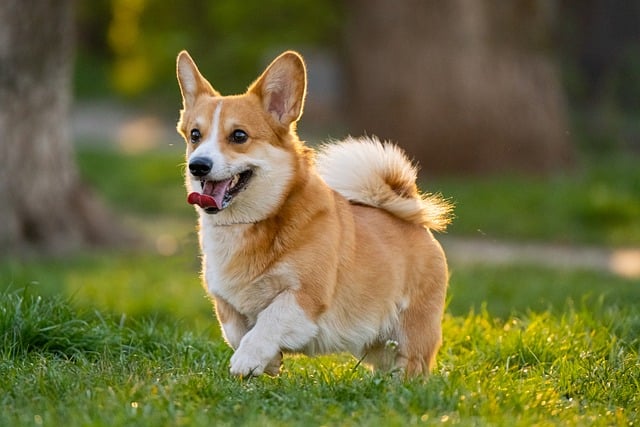
How to potty train an old dog?
Potty training an old dog takes patience more than speed—unlike puppies, adult pups have established habits, so rushing can make them anxious.
I sat on a bench in my friend Jake’s Boston neighborhood park last Saturday, watching his 1-year-old Labradoodle, Ruby, freeze mid-step as a golden retriever bounded toward her. Ruby’s tail went stiff, her ears flattened against her head, and she lifted a paw—Jake tensed, reaching for her leash. “Is she scared? Angry? I can’t tell what she’s trying to say. Dog body language with other dogs is like a foreign language to me,” he said, just as the golden retriever’s owner called their pup back. If you’re a new U.S. dog owner, decoding how your pup communicates with peers isn’t just “fun to know”—it’s how you keep them safe, calm, and happy in the park or on the sidewalk.
To understand dog body language with other dogs, start with this: Canine communication is 90% nonverbal. Unlike humans, dogs don’t use words to say “let’s play” or “leave me alone”—they rely on subtle shifts in posture, tail position, and facial expressions. Jake’s vet, Dr. Carter, explained that this is rooted in pack behavior: Dogs evolved to avoid fights by sending clear signals, so misreading those cues (like thinking a stiff tail means “happy”) can lead to conflict. Scolding a dog for “overreacting” (like Jake almost did when Ruby backed away) violates U.S. animal welfare standards; she wasn’t being “difficult”—she was saying “I’m uncomfortable,” and our job is to listen, not punish.

Here’s how to decode dog body language with other dogs, using what Jake learned about Ruby: First, friendly signals (go ahead and let them interact). A “play bow” (front legs down, rear up) is the clearest invite—Ruby did this with a tiny terrier later, and they chased each other for 10 minutes. Look for loose, wiggly bodies (no stiffness), tails held mid-height and wagging in wide arcs, and soft eyes (no hard staring). The terrier licked Ruby’s chin—another peace offering, like a doggy “hello.” Second, stress or “back off” signals (step in fast). Ruby’s stiff tail and lifted paw were classic “I’m nervous” cues. Other red flags: lip licking (not from hunger), ears pinned flat, or a “freeze” (body still as a statue). If you see these, call your dog over and give them a treat (positive reinforcement for coming to you). Jake did this, and Ruby relaxed once she was by his side. Third, aggressive signals (move away immediately). These are rare but obvious: a high, stiff tail wagging rapidly, bared teeth with a growl, or leaning forward (preparing to lunge). Dr. Carter said these are last-resort signals—dogs usually give stress cues first if we’re paying attention.
For apartment living and community interactions, these rules matter even more: In shared hallways, keep your dog on a short leash and watch for other dogs’ body language—if a neighbor’s pup pins its ears, cross the hall to give space. When walking, carry two essentials: biodegradable poop bags (Boston fines $200 for leaving messes) and a treat pouch—reward your dog for looking at you instead of fixating on another pup (great for leash manners). Always ask “Can my dog say hi?” before letting them interact—some owners know their pup dislikes strangers, even furry ones. Never skip vet checkups: Dr. Carter updated Ruby’s rabies vaccine (mandatory nationwide) and showed Jake photos of body language cues to reference—vets often host “puppy socialization” classes where you can practice reading signals, but they need proof of core shots first.
A week later, Jake texted me a video: Ruby doing a play bow with the golden retriever, both tails wagging wildly. Dog body language with other dogs? For Jake and Ruby, it was learning to speak the same “language.” For your pup, it’s about watching closely, respecting their cues, and using treats to build trust. The park doesn’t have to be stressful—once you know what to look for, you’ll both enjoy the interactions.

Potty training an old dog takes patience more than speed—unlike puppies, adult pups have established habits, so rushing can make them anxious.

Professional dog trainers typically reach for treats that are small, soft, and incredibly high-value—the canine equivalent of gourmet chocolate.

At first glance, training treats and regular treats might seem interchangeable, but they’re designed for entirely different purposes. Training treats are typically tiny

I leaned against my friend Mia’s New York City apartment counter last Tuesday, watching her rush around grabbing keys—shoulders hunched, jaw tight

Dogs don’t just hear your words; they’re masters at reading your entire physical presence. Thanks to thousands of years of domestication

Many dogs freeze up or bark excessively when they see other pups at the neighborhood park, and this isn’t just shyness—it’s often social anxiety.